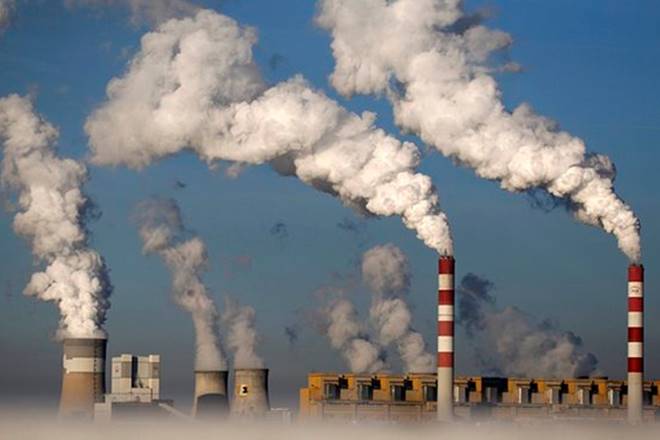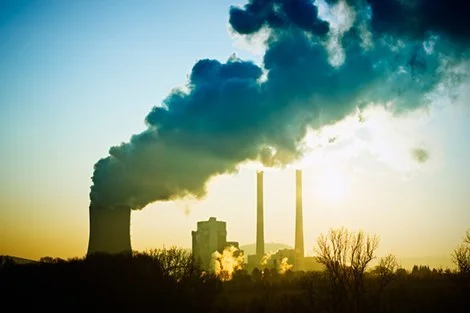The Alarming Reality of Air Pollution in 2015
In 2015, a staggering report revealed that air pollution was responsible for over 3 million deaths worldwide. This sobering statistic highlighted the growing danger that air pollution poses to public health. The global community became increasingly aware that polluted air was not just a local problem but a crisis with devastating consequences for millions of people.

The World Health Organization (WHO) linked air pollution to various respiratory and cardiovascular diseases, emphasizing its impact on vulnerable populations, including children and the elderly. With cities around the world grappling with rising pollution levels, the urgency to address this crisis intensified.
Health Consequences of Air Pollution
The effects of air pollution on health are well-documented. It contributes to conditions such as asthma, lung cancer, and heart disease. In 2015, the number of deaths directly related to air pollution surpassed those from many infectious diseases, making it a leading cause of premature mortality. Polluted air doesn’t discriminate—it affects individuals across different regions, social classes, and ages.
According to health experts, the majority of deaths caused by pollution in 2015 occurred in low- and middle-income countries, where industrial growth often comes at the expense of environmental regulations. However, no country is immune, and developed nations also faced significant challenges in reducing pollution levels.
The Global Efforts to Tackle Pollution
Governments and organizations across the globe have recognized the critical need for cleaner air. In response to these alarming death statistics, many nations started implementing stricter air quality regulations. Cities invested in green infrastructure, promoted public transportation, and pushed for a transition towards renewable energy to reduce their carbon footprint.
In the United States, the Clean Air Act continued to play a pivotal role in improving air quality, but air pollution remains a major issue in urban areas. From Los Angeles to New York City, smog levels remain a visible reminder of the ongoing fight against air pollution.
Industrialization and Urbanization’s Role in Pollution
The rapid pace of industrialization and urbanization, particularly in countries like China and India, has significantly contributed to global air pollution levels. Factories, transportation emissions, and the burning of fossil fuels have intensified the problem.
In 2015, China, with its dense urban population and heavy reliance on coal, was reported as one of the nations most affected by air pollution-related deaths. The infamous Beijing smog became a symbol of the nation’s struggle to balance economic growth with environmental sustainability.
A Call for Global Action
As the devastating figures from 2015 show, air pollution is a problem that requires global cooperation. Efforts to limit emissions, enforce environmental regulations, and transition to clean energy are vital steps. The Paris Agreement, signed that same year, was seen as a monumental step forward in reducing emissions and curbing global warming, which is intrinsically linked to pollution.
“We have a responsibility to protect the air we breathe for future generations,” stated a WHO spokesperson. This call to action is as urgent today as it was when these deaths were first reported in 2015. Governments, industries, and individuals must work together to create lasting change.
Conclusion: The Future of Our Air
The death toll from air pollution in 2015 served as a wake-up call for the world. Though progress has been made since then, much more needs to be done to ensure that the air we breathe is safe. The health of millions of people continues to be at risk, and global leaders must prioritize the fight against air pollution to prevent future tragedies. Clean air should not be a luxury but a fundamental right for all.





buy amoxil pill – buy amoxicillin online buy amoxil online
brand amoxicillin – comba moxi buy amoxicillin generic
diflucan 200mg tablet – https://gpdifluca.com/ diflucan 100mg canada
fluconazole 200mg canada – https://gpdifluca.com/# order diflucan pills
buy cheap lexapro – order escitalopram 20mg buy cheap generic escitalopram
cenforce 50mg drug – order cenforce 50mg cenforce 50mg brand
order cenforce sale – https://cenforcers.com/ purchase cenforce generic
what is the generic name for cialis – click evolution peptides tadalafil
cialis no perscription overnight delivery – https://ciltadgn.com/# cialis samples
buy cialis in las vegas – https://strongtadafl.com/ tadalafil generic 20 mg ebay
cialis dapoxetine – best research tadalafil 2017 cialis canada
ranitidine 300mg canada – order zantac 300mg without prescription ranitidine price
buy viagra cialis online canada – https://strongvpls.com/# viagra 50mg buy
sildenafil 100mg tablet – https://strongvpls.com/# viagra pill 100mg
With thanks. Loads of conception! prednisone 10mg price
I am in fact enchant‚e ‘ to glitter at this blog posts which consists of tons of useful facts, thanks object of providing such data. https://gnolvade.com/es/doxicicline-comprar-online/
Thanks on putting this up. It’s evidently done. on this site
Thanks for putting this up. It’s understandably done. amoxicillin online
Good blog you possess here.. It’s obdurate to on great calibre writing like yours these days. I justifiably appreciate individuals like you! Take mindfulness!! https://prohnrg.com/product/loratadine-10-mg-tablets/
This is a topic which is near to my verve… Diverse thanks! Unerringly where can I find the acquaintance details an eye to questions? https://ursxdol.com/augmentin-amoxiclav-pill/
The vividness in this serving is exceptional. https://ursxdol.com/doxycycline-antibiotic/
Thanks recompense sharing. It’s first quality. https://prohnrg.com/product/priligy-dapoxetine-pills/
I couldn’t resist commenting. Warmly written! https://aranitidine.com/fr/cialis-super-active/
I’ll certainly return to review more. https://ondactone.com/spironolactone/
More content pieces like this would insinuate the web better. https://ondactone.com/simvastatin/
Greetings! Extremely gainful suggestion within this article! It’s the crumb changes which choice make the largest changes. Thanks a a quantity towards sharing!
https://proisotrepl.com/product/baclofen/
Thanks an eye to sharing. It’s first quality.
how to get generic tetracycline pill
I’ll certainly bring to review more. https://www.bausch.co.jp/ja-jp/redirect/?url=https://wakelet.com/wake/Ygm_w25-9BwVAfPHOoN7B
This is the description of topic I have reading. https://www.forum-joyingauto.com/member.php?action=profile&uid=47848
I don’t think the title of your article matches the content lol. Just kidding, mainly because I had some doubts after reading the article. https://www.binance.info/ro/register?ref=V3MG69RO
Greetings! Extremely productive recommendation within this article! It’s the little changes which choice obtain the largest changes. Thanks a lot in the direction of sharing! http://forum.ttpforum.de/member.php?action=profile&uid=425016
dapagliflozin price – order dapagliflozin 10mg online dapagliflozin 10mg drug
brand dapagliflozin 10 mg – dapagliflozin over the counter forxiga over the counter
where can i buy orlistat – on this site buy orlistat pill
where to buy xenical without a prescription – https://asacostat.com/ xenical 60mg tablet
This website exceedingly has all of the tidings and facts I needed adjacent to this subject and didn’t identify who to ask. https://experthax.com/forum/member.php?action=profile&uid=124802
More articles like this would frame the blogosphere richer. http://www.01.com.hk/member.php?Action=viewprofile&username=Quyfeh